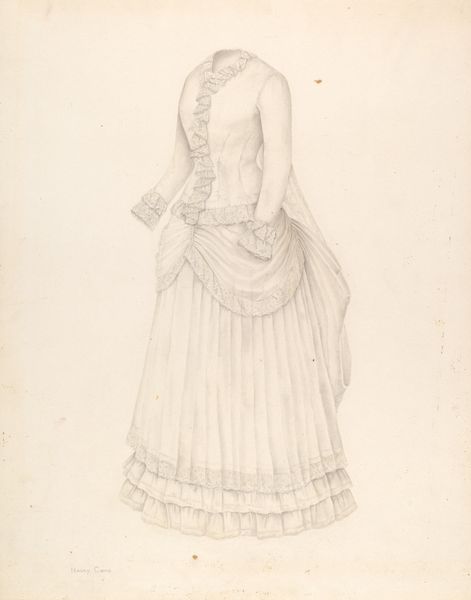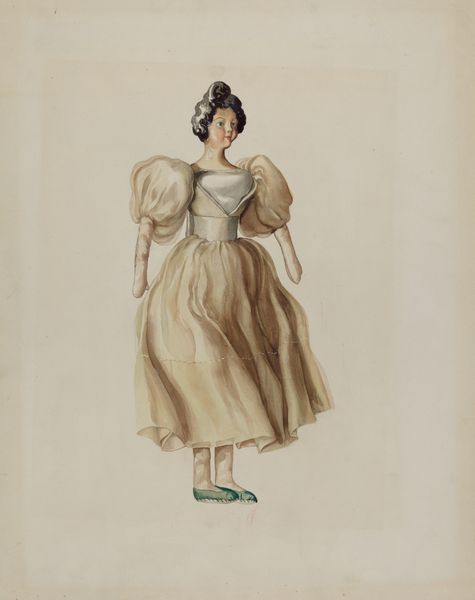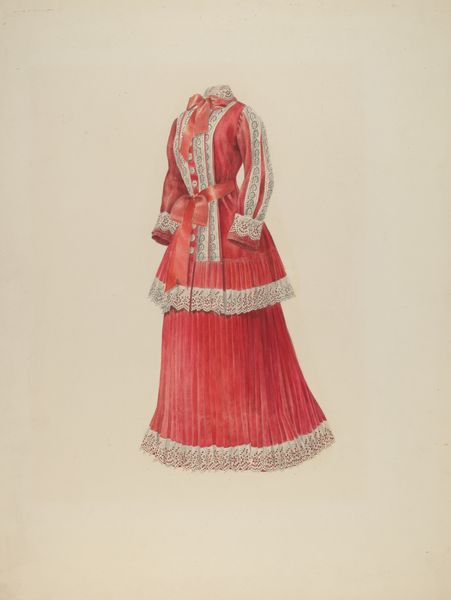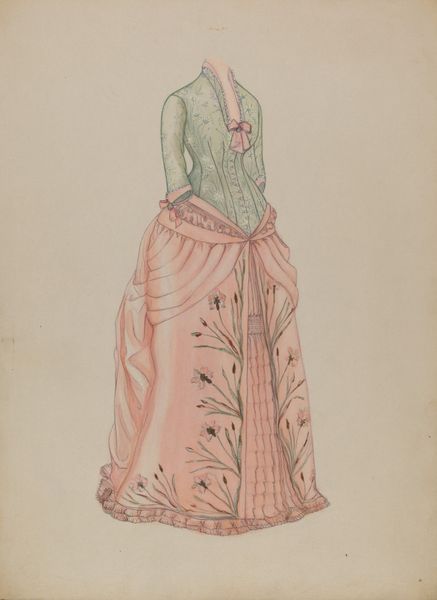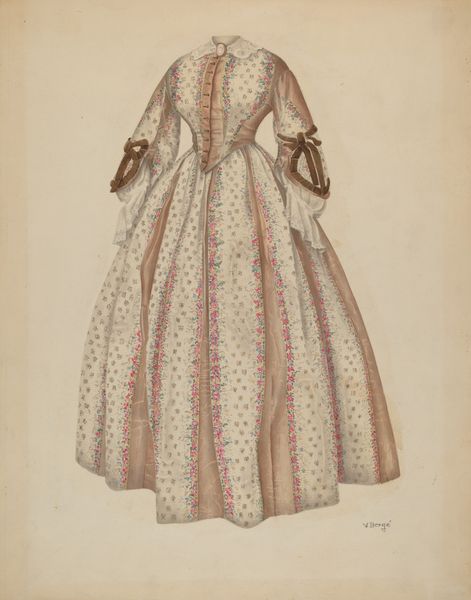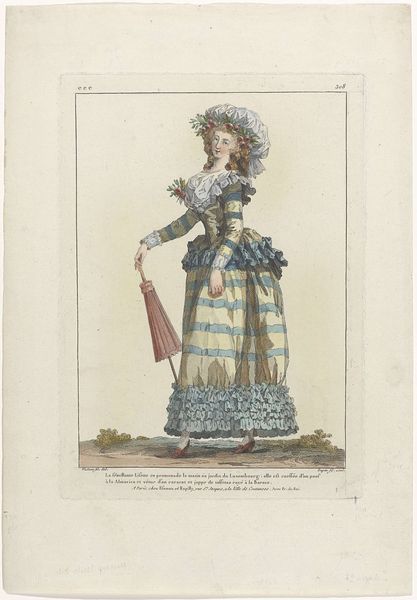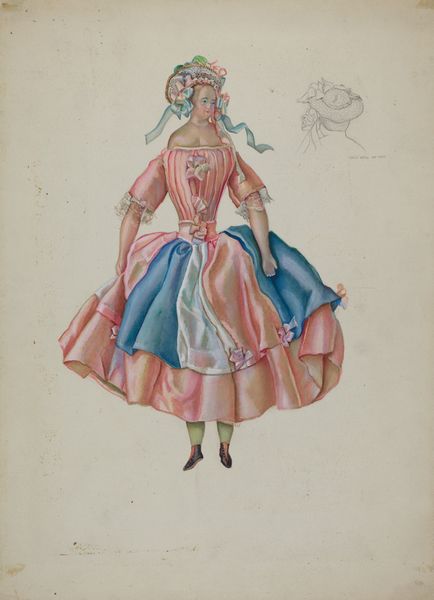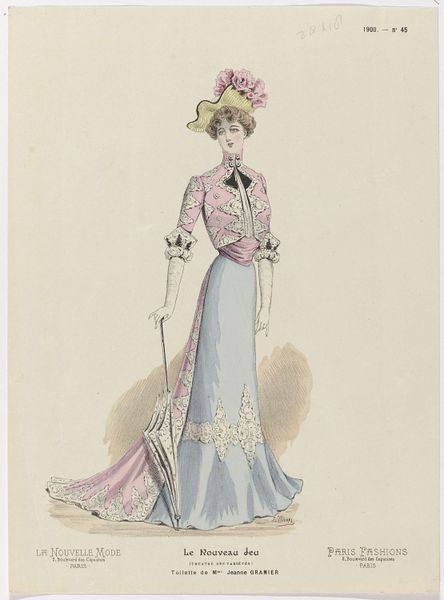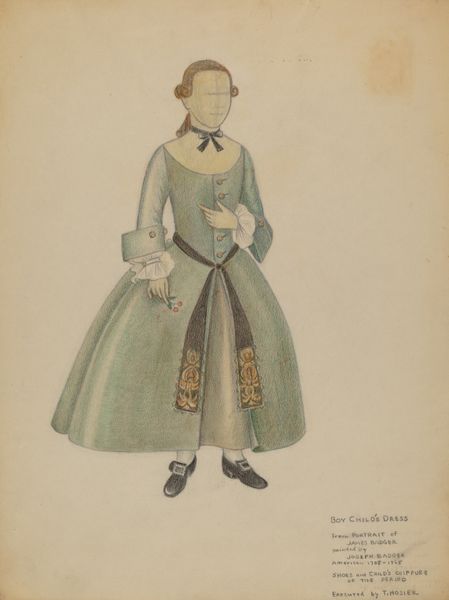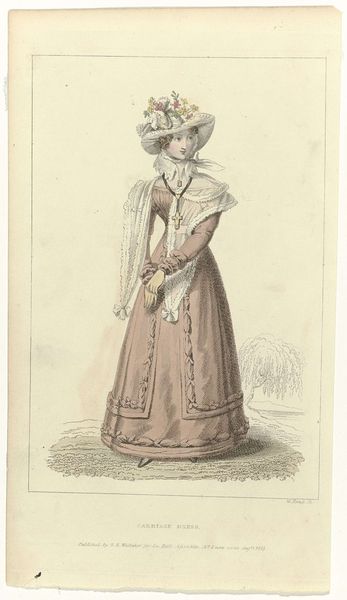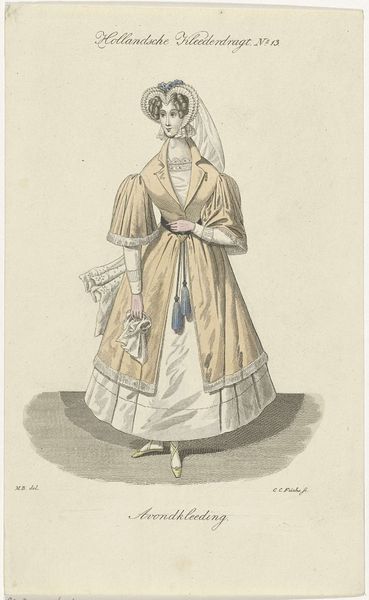
drawing, painting, watercolor
#
portrait
#
drawing
#
painting
#
figuration
#
watercolor
#
folk-art
#
watercolor
Dimensions: overall: 42.2 x 33 cm (16 5/8 x 13 in.) Original IAD Object: 7 1/2" high
Copyright: National Gallery of Art: CC0 1.0
Curator: This whimsical rendering is Albert Rudin's "Corn Husk Doll," dating back to 1939. It's a delightful combination of painting and drawing, primarily watercolor, capturing a portrait in the folk-art style. Editor: It's instantly charming! There's something very sweet and fragile about the doll's delicate posture and the faded pastel colors. It feels like a forgotten memory brought back to life. Curator: Indeed. Let's consider the artist's emphasis on the formal arrangement. The tiered ruffles of the skirt, repeated linear patterns, the small bouquet she's holding. The repetition is crucial to its form. And this sense of formality contrasts rather playfully with the homemade aspect of the doll itself. Editor: I think that playful aspect comes from the imperfections. It isn't trying to be a "perfect" representation. Those wobbly ruffles, the slightly smudged paint—they bring her down to earth, they lend personality. You know? Like when you're drawing from imagination? You don't bother with being super accurate or whatever? You are in pursuit of joy instead! Curator: That 'pursuit of joy' aligns with my thoughts of it. There is no illusion of reality here. The doll’s materiality—the stiffness of the corn husk, the plainness of the watercolors—keeps bringing us back to the essential artificiality of the construct, both of the object itself and of representation itself. The blue accents lead the eye; starting with the little flowers, moving up the jacket, until stopping at the hat with its playful feathers. It is all quite carefully planned to engage. Editor: Totally! This isn't about cold, detached realism. It's an echo, perhaps of a beloved childhood object? What do you reckon the blue means here? Curator: An element of decorum maybe? Even though it appears very faded and muted here. This element of color brings a sense of elegance or even aspiration to high fashion to the work as a whole. Perhaps also emphasizing the period the doll itself depicts. Editor: Yes! It certainly invites the mind to wander down many nostalgic and colourful avenues. Curator: Agreed. Ultimately, “Corn Husk Doll” succeeds because it finds joy and interest, where an unimaginative eye would probably not. Editor: Exactly. I will certainly not overlook any corn husk dolls again!
Comments
No comments
Be the first to comment and join the conversation on the ultimate creative platform.

